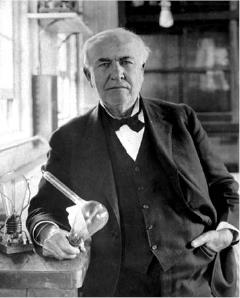Science and InventionThomas Edison |
Is Thomas Edison the greatest inventor in history? |
Some believe that he is, and for good reason: Thomas Alva Edison (1847–1931), the so-called “Wizard of Menlo Park,” registered 1,300 patents in his name during his lifetime, more than have been credited to any other individual in American history. His best-known inventions include an automatic telegraphy machine, a stock-ticker machine, the phonograph (1877), the incandescent light bulb (1878), and the motion picture machine (kinetoscope; 1891). Edison also made one major scientific find during his research, when he observed that electrons are emitted from a heated cathode (the conductor in an electron tube)—the phenomenon is known as the “Edison effect.”
When Edison was still in his twenties, he set up a laboratory where 50 consulting engineers worked with him on various inventions. By his own description, the Newark, New Jersey, plant was an “invention factory.” It operated for six years, during which Edison was granted about 200 new patents for work completed there. The laboratory is regarded by most as the first formally organized nonacademic research center in the United States. By 1876 Edison had outgrown his Newark facilities and arranged for the construction of a new plant at Menlo Park, New Jersey. His most productive work was accomplished at this location over the next decade.

